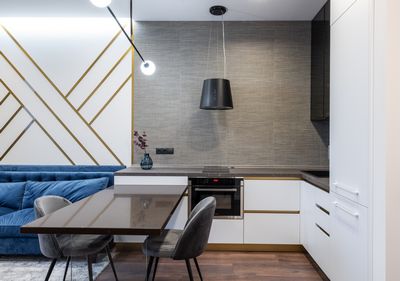
Apartment living in Australia has become increasingly attractive over the past few decades – in fact, at the last count, there were more than 1.2 million apartments in the country 1 . Over 25 years, the number of occupied apartments increased by 78 per cent and now around 10 per cent of us live in an apartment 2 .
Apartment living offers many advantages and from an insurance perspective is a different proposition to living in a freestanding house.
So, do you need insurance for your apartment if you’re renting? And, do you need insurance for your apartment if you’re an owner occupier? Here’s what you need to know.
How does insurance for apartments work?
If you own an apartment, you’re likely part of a strata agreement, which collectively owns the building. That means the insurance for the physical structure you live in is likely covered as part of the strata fees you pay 3 . While each state and territory has different legislative requirements, in most cases this means you won’t need to take out a policy to cover your home’s structure. If you’re unsure, check with the body that manages your property.
Similarly, if you’re a renter, the building’s landlord is responsible for insuring it.
Cover for the contents in your apartment, however, is something the individual owner or occupier or renter must arrange themself. Contents insurance covers your belongings, and in some cases fixtures. Fixtures are items that are permanently attached to your home — like an oven for example.
So whether you own or rent an apartment, consider contents insurance if you want to protect your belongings.
Why do you need contents insurance if you’re living in an apartment?
Content’s insurance can cover belongings for an insured event that leaves them damaged or lost – for example, water damage, fire, flood, storm or cyclone.
It also covers theft and malicious damage. This is an important consideration, even though it might seem apartments offer more security on the face of it. There might be key-card access to the building. There could even be security cameras. However, it’s important to avoid becoming complacent.
A vast amount of people may be able to enter an apartment building without arousing suspicion. If an unknown person is wandering around the outside of a freestanding home, neighbours will likely be alerted. An unknown person roaming around an apartment complex could just be visiting one of many residents.
Importantly, contents insurance usually also includes legal liability cover. That means it can protect you from the legal costs if an accident happens in your apartment — like if someone trips over your child’s toys and injures themself. Legal liability cover can also provide protection outside the home within Australia. Or in some cases, including with QBE contents insurance, worldwide.
Do you need any extra cover?
Whether you’re a renter or an owner, many contents insurance policies have other benefits you may not have considered before. For example, QBE Contents Insurance offers new-for-old replacement on items and up to $500 towards the cost of replacing spoiled food if there is a failure of the electricity supply, or mechanical or electrical breakdown of your fridge or freezer.
Plus, for an additional premium you can also add optional extras, such as accidental damage and portable contents cover, to many policies.
Accidental damage insurance covers things such as knocking a bottle of red wine over the carpet, or a tin of paint over your new sofa. While portable contents cover can protect things like mobile phones and engagement rings while you’re outside your home.